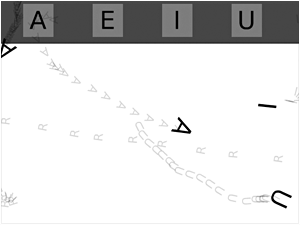Author: 0alloldusers
Final Project
http://dtc-wsuv.org/ssims18/final/
Final Essay
https://twinery.org/2/#!/stories/3f0a145a-c957-457a-a58f-dbada952a788/play
Artist Statement
I’m not that experienced with hypertext but working on this helped me get a lot better at it than I was previously. I read a lot of tutorials in order for me to create the time system that I would need. I wanted to explore the idea of interactive fiction and hypertext fiction. I wanted to create a story with one ending but I wanted the player to get to that ending in their own way. This work was mostly inspired by Device 6 by Simon Flesser. I really like in Device 6 how you didn’t know what was going on and how you had to try to figure out what was going on by exploring. I incorporated that idea by having the player explore the area and to find clues on how to escape just like in Device 6. Device 6 used clips of audio as hints, I used notes that were scattered around the house. I also took a few ideas from With Those We Love Alive by Porpentine. I liked how she had a time system that caused the game to advance as days would go by. I wanted to incorporate a similar idea with time advancement. I decided to make a time system that would allow time to slowly advance based on the players actions. The more time would advance the harder it would be for the player. For example, every room in the house (except certain rooms you would need special items for) is accessible. But as time would advance, some of those rooms would be no longer accessible and would cause the player’s character to die. I made it so the main rooms the player would need to complete the game are accessible as long as the player has items that they need. Another idea I like in Device 6 I wanted to use was it’s puzzles. Device 6 is filled with difficult puzzles that challenged the reader to solve them. I’ve never made a puzzle, riddle, or any type of problem like that before so I wanted my puzzle to be more exploration based. In order to succeed, the player would has to have a key that is locked in a four digit safe. Each digit is hidden in the house among one of my eight notes. If the player finds the four notes that have the code then the player can access the safe. All eight of the notes tell the history of the cursed house. Some of those notes however have certain requirements to access. Some can only be accessed before a certain time and some can be only accessed after a certain time and with certain objects. To be able to plan an area this big I made a personal map for myself to have a layout. I did this from the video we watched in class about Colossal Cave Adventure. The guy in the video printed out a map to help him navigate through the game so I wanted to do the same just for my own benefit to help me stay organized. The notes that I wrote were slightly inspired by The Babysitter. I wanted them to be spread out for the player to find somewhat out of order. I wanted the player to try to find them all and to try to make sense of what happened just like I did when I read The Babysitter.
Presentation Video
Self 0.0.1
http://philome.la/Elmidan1/self/play
Elaina Sundwall and Jake Martin
https://dtc-wsuv.org/esundwall18/red/
Final Project Presentation
Final Presentation
Final Project
Here is the link to my short interactive fiction project:
Slides
Jacob Cook Presentation
Kinetic and interactive Poetry

The first piece of work that I wanted to explore was Jörg Piringer’s sound poems. I never was big into poetry but the word sound poem had me interested and I was curious and wanted to see what it was. What I thought it would be and what it turned out to be were two completely different things. I thought it was gonna be a bunch of random voices reciting poetry but what it turned was a bunch of random voices saying sounds. This made me question what the definition of poetry. What is a poem? Though it reminded me of when Scott Rettberg discussed how Readers can change sounds created in different ways. That is just what I did as a reader for Jörg Piringer’s poems. I created and changed multiple sounds just by clicking.
The second poem I explored was Cruising by Ingrid Ankerson and Megan Sapnar. This poem also uses sound but also uses images as well. The images can travel either fast or slow depending on how you control it and a woman’s voice is reading the text. I found that helpful to be immersive in the poem as I made the images travel fast so it felt like I was in a car looking out a window. It made a lot more sense to me as well than the sound poems did. It told a story that was easy for me to follow as the sound poems didn’t really seem to have any direction whatsoever.